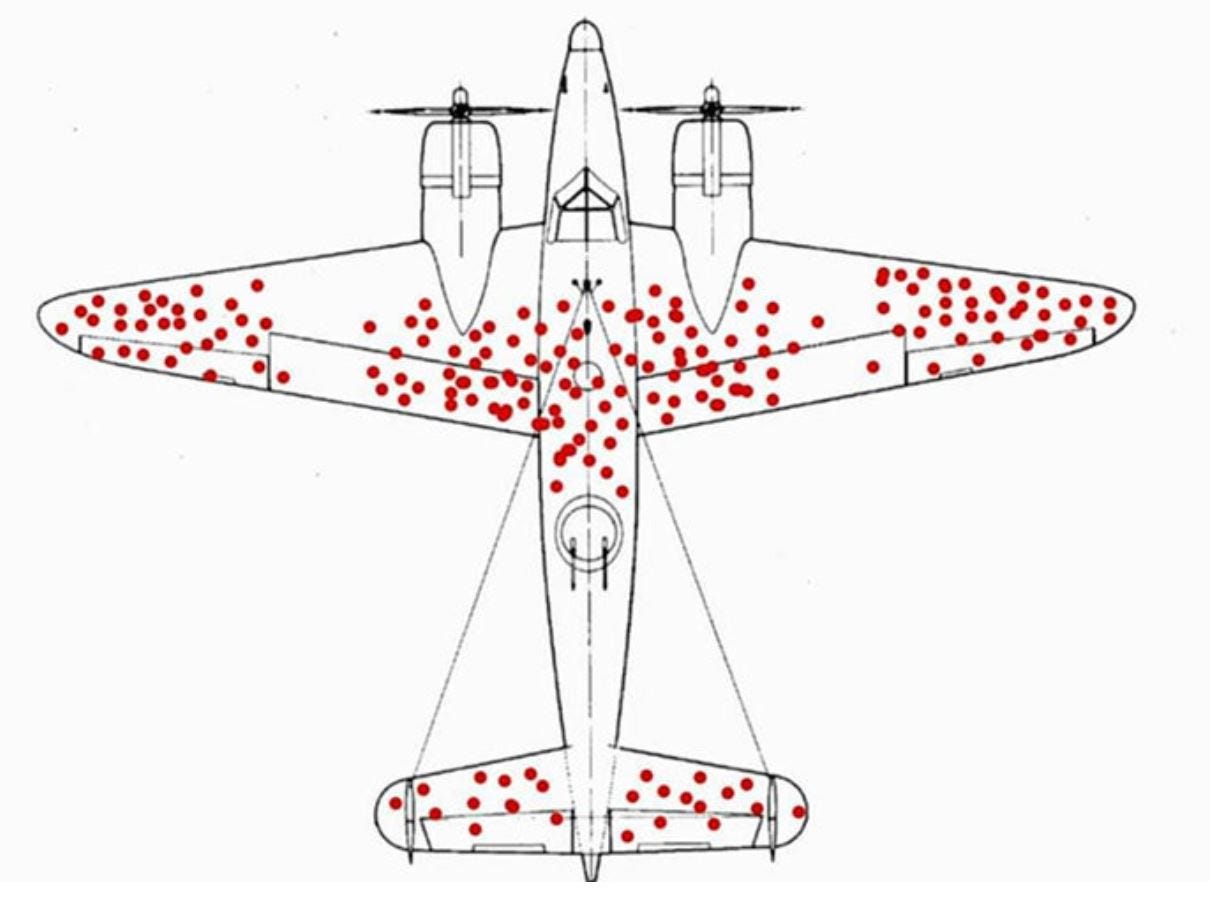
The Trap of Survivorship Bias: Lessons from Warplanes, Games, and Business Strategy
The Classic Example: WWII Aircraft and Misguided Armor Placement
A few months ago, I shared a post on Facebook about survivorship bias. I was surprised by how widely it was liked and shared—proof that this simple but powerful concept resonates across many industries.
One of the most famous illustrations of survivorship bias comes from World War II. Analysts in the U.S. Navy were tasked with figuring out how to better protect bomber aircraft. They studied bullet holes on planes that returned from missions and recommended reinforcing the areas with the most damage—primarily the wingtips, fuselage, and elevators.
Enter Abraham Wald, a statistician who changed the course of the analysis. Wald realized the problem: the analysis only included aircraft that had survived. The planes that didn’t return likely sustained damage in other areas—areas so critical that being hit meant the aircraft was lost. Wald proposed reinforcing the sections with no bullet holes, such as the cockpit and engines. His insight likely saved countless lives.
What Is Survivorship Bias?
Survivorship bias is the tendency to focus on people or things that made it past a certain selection process, while overlooking those that did not—often because they are no longer visible.
It causes flawed reasoning and leads to conclusions based on incomplete data. We see what survives, but not what was lost.
Survivorship Bias in the Real World
In Gaming and Gambling
In game development, survivorship bias can be especially dangerous. A team might look at a hit mobile game and try to replicate specific features, believing those mechanics drove its success. But what if failed games used the same features—and more of them?
Take Kim Kardashian: Hollywood. It might tempt other developers to believe that using celebrity IP is a guaranteed win. But for every successful IP game, there are dozens of flops we never hear about.
The same applies to building a VIP program. Developers may analyze current VIP behavior to shape future engagement strategies. But they rarely investigate the behavior of players who didn’t become VIPs—or ask why those players didn’t engage deeply in the first place.
In Investing
Survivorship bias also distorts how we perceive financial performance. Most published data on mutual funds only includes those that still exist. Funds that failed or underperformed and were shut down are excluded, giving a falsely positive view of the market.
In Sports and Education
Some of the best NBA players—like LeBron James or Deandre Ayton—skipped or only briefly attended college. It might lead a teenager to believe that college isn’t necessary for success. But millions of others who left school early never made it to the pros. The outliers are just that—exceptions, not a rule.
In Small Business
You might visit a bustling CrossFit gym and think, “I could do this too.” But for every successful fitness studio, there are countless others that closed down quietly. What you're seeing is the equivalent of the bombers that made it home.
How to Avoid Survivorship Bias
Survivorship bias is invisible unless you look for it. But there are ways to counteract its effects and make smarter, more grounded decisions.
1. Look for What’s Missing
Don’t just study successes. Study failures. Ask: what ideas failed, and why? What commonalities exist among the ones that didn’t make it?
2. Use Complete Data Sets
Make sure your data includes all relevant cases. If you're studying investment returns, make sure it includes funds that closed. If you’re analyzing games, look beyond just the ones that cracked the top charts.
3. Question Anecdotes and Outliers
Just because someone became a millionaire by dropping out of college doesn’t mean that’s a sound life strategy. Outliers don’t create reliable models.
4. Flip the Question
Instead of only asking, “What do the winners do?” ask, “What did the losers do?” Or better yet, “What did both groups do—and what set them apart?”
5. Analyze Failures in Depth
Conduct post-mortems on unsuccessful products or projects. What went wrong? What assumptions didn’t hold? Make failure part of your learning cycle.
6. Build from Strategy, Not Mimicry
Don’t imitate success blindly. Use proven frameworks like SWOT analysis and Blue Ocean Strategy to build plans that align with your unique capabilities, market conditions, and long-term goals.
Key Takeaways
- Survivorship bias causes us to draw conclusions from incomplete samples—focusing on those who made it and ignoring those who didn’t.
- The U.S. military nearly made a strategic mistake in WWII by reinforcing the wrong parts of returning aircraft.
- This same cognitive trap exists in gaming, business, investing, education, and nearly every field.
- To overcome it, you need to actively study failures, seek complete data, avoid relying on anecdotes, and use structured strategy tools.
- The best decisions come not from mimicking success stories, but from understanding the full landscape—both visible and invisible.
Final Thoughts
Success stories are compelling, but they can be deceptive. Just like the bombers that made it back, the products, people, and companies we see often don’t represent the full picture. To avoid costly mistakes, we must also learn from the silent data: the failures, the dropouts, the products that didn’t survive.
Only by recognizing and correcting for survivorship bias can we build smarter, more resilient strategies—whether in games, business, or life.

%402x%20(1).svg)
%402x.svg)
%402x.svg)


%402x%20(dark).svg)
%402x%20(dark).svg)
%402x.svg)
%402x.svg)
%402x.svg)